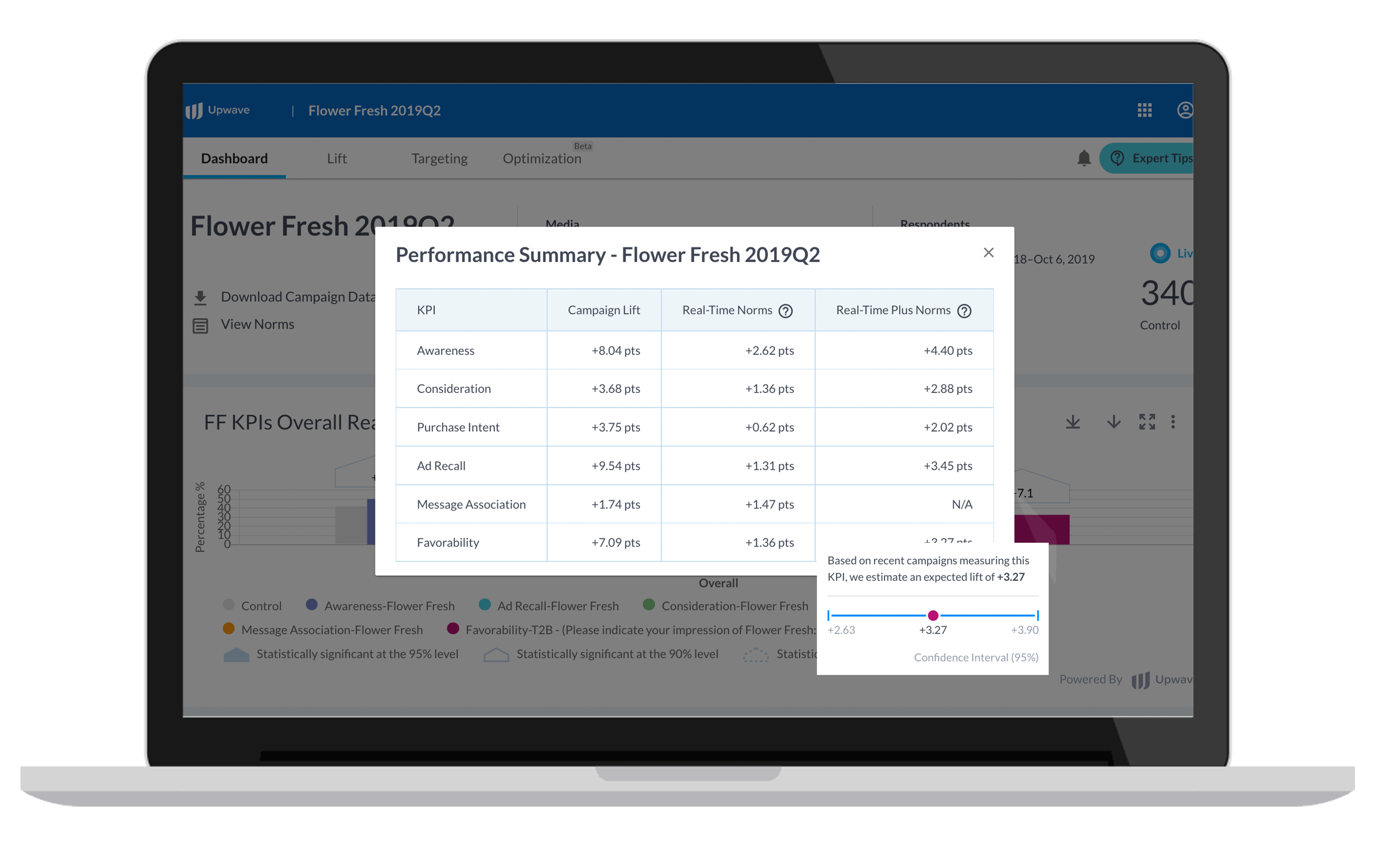Norms answer an essential question every marketer asks: How is my campaign performing relative to similar campaigns?
The traditional approach to gauging performance using “norms” applies industry-average lifts across studies without considering the more meaningful factors that impact the performance of a specific campaign. While it seems like it would make sense in theory at first, evaluating campaign performance for a beverage company against the performance of campaigns for other beverage companies is, in fact, rather misleading. It’s not enough to simply control for industry or category, because even within a category, the levels of baseline awareness and ad recall or other brand KPIs can vary drastically.
Not to mention, industry selection has been found to be subjective for many brands, resulting in an arbitrary inclusion of “peer” brands and exclusion of all other brands. Furthermore, throwing out the data for all “non-peer” brands increases the error bars of the norm, making it an unreliable indicator of expected performance. It’s important to always ask for the confidence interval of the norm, as it is typically not included by most analytics providers.
Benchmarks with Baselines
As the Upwave methodology reveals, baseline levels of awareness and ad recall for a specific brand are more significant considerations for evaluating expected performance than the industry in which the brand happens to be classified. Rather than relying on inaccurate, one-size-fits-all solutions to norms, brands and their media partners must consider how campaign and brand-specific factors affect different KPIs. Upwave currently factors in those drivers that, according to our data science team, appear to have the highest impact on the average expected lift of a campaign.
 Introducing Upwave’s Real Time+ Norms
Introducing Upwave’s Real Time+ Norms
Upwave’s campaign measurement dashboard now includes a new feature that accounts for both seasonality and baselines. Real Time+ Norms builds upon our existing Real Time Norms, which account for seasonal effects like whether a campaign was run during a holiday season or a period of unrest.
Real Time+ Norms level-up your insights by also factoring in the baseline level of your brand for each Brand KPI, which our studies have shown is more critical to benchmarking performance than one-size-fits-all industry averages. For example, brands with low baseline levels of awareness (“Newcomers” or “Challengers”) are likely to be new entrants, and should expect higher average awareness lift than mature brands (“Category Leaders”) with over 80% baseline awareness. Baseline ad recall and brand awareness provide an indicator of the general performance of a campaign, while the brand’s overall position in the marketplace can signal whether a 3 percent lift in ad recall is a red flag or money well spent.
Continuous Improvement
At Upwave, we help brands of all maturity levels understand when their campaigns are underperforming or overperforming. With Real Time+ Norms, we’re delivering benchmarking with meaningful baselines directly in the Upwave dashboard for easy access and rapid insights. In the future, our data science team will add additional factors that relate to expected performance beyond seasonality and baselines.
